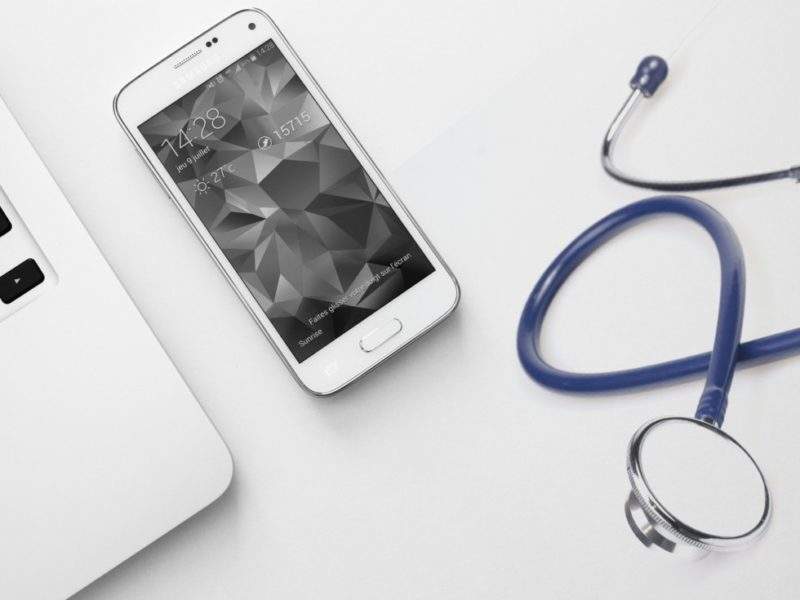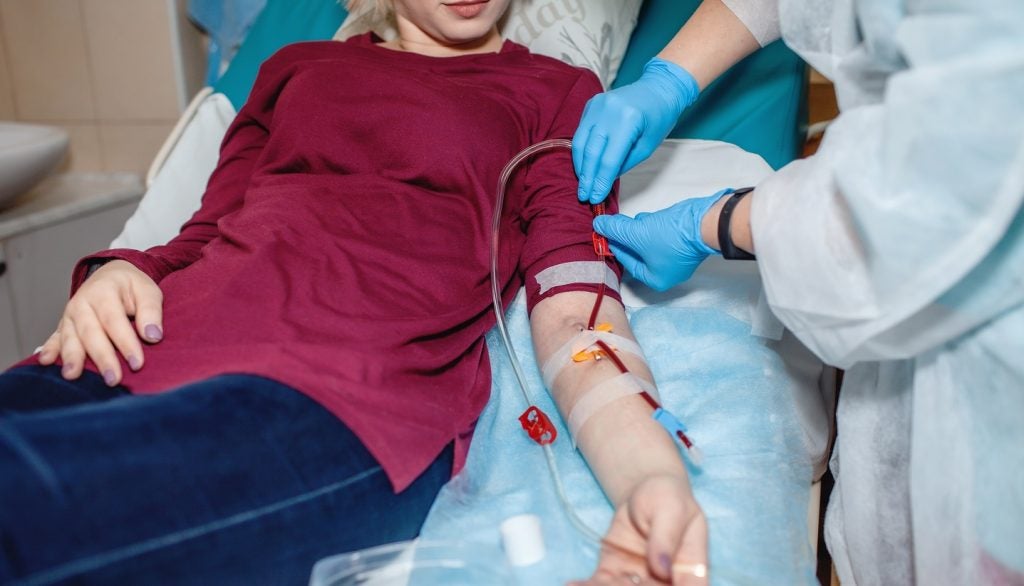
In an age of spiralling healthcare costs and dramatic population growth, healthcare providers are struggling to keep up with the demand from patients who need rapid diagnosis. Existing approaches are unable solve these problems, but UK-based mobile diagnostics service VisitHealth believe they have answer.
The company combines visits from health care professionals to wherever is convenient for patients with a communication-focused, web-based app. It’s healthcare professionals, who are primarily nurses, perform a range of tests and other assessments using VisitHealth’s Connected Care Kit, including electrocardiograms (ECGs), point-of-care tests and spirometry.
Test results are then sent directly and confidentially to the doctor in real-time via the app in order to enable effective diagnosis and the creation of treatment plans. The app can also be used by patients and doctors to schedule a visit, book appointments and review patient records.
In the context of UK Health Secretary Matt Hancock’s new technological focus for the NHS, VisitHealth CEO Yulia Smal discusses how the service works, opportunities she sees arising from the NHS’ new technological focus and future prospects of expanding the platform inside and outside the UK.
Allie Nawrat: Where did the idea for VisitHealth come from?
Yulia Smal: The idea first crossed my mind around three to five years ago when my daughter was sick and her pediatrician was abroad. We called him every day, but he could hardly help because he needed lab tests. I already knew that digital stethoscopes can transmit sound in real time and I knew about the rapid test for streptococcus, but I didn’t have easy access to them.
How well do you really know your competitors?
Access the most comprehensive Company Profiles on the market, powered by GlobalData. Save hours of research. Gain competitive edge.

Thank you!
Your download email will arrive shortly
Not ready to buy yet? Download a free sample
We are confident about the unique quality of our Company Profiles. However, we want you to make the most beneficial decision for your business, so we offer a free sample that you can download by submitting the below form
By GlobalDataI looked at my daughter and realised that she could be easily helped without being taken to A&E and being seen by a doctor who didn’t know anything about her.
There are lots of apps providing connection to your doctor, but between 30% and 40% of the time they are not able to provide full information for patients [because] they lack some data, therefore, it became clear that is a gap in the market.
An important distinguishing feature of our service is that we have a human face. We have very experienced health professionals that visit patients in real life. We are not simply at the end of the phone or app, we see patients for face-to-face consultations.
AN: What stage of production and development is VisitHealth currently at?
YS: We have two main audiences, business-to-business (B2B) and business-to-consumer (B2C).
At first, we developed our B2B services, i.e. working directly with doctors and consultants. So, our clients (doctors) tested the platform and provided their feedback. Following this feedback, we are making final adjustments, with an aim to have the final version available by the end of August.
While we were visiting our first patients, we noticed that patients themselves started to recommend us to their friends and family. That made us think of developing a B2C offer. The beta version is about to be released and tested by our clients.
We have started providing services on a small scale. Our healthcare professionals and administrators already use a version of the app managing requests, transmitting information from the devices and uploading it together with the reports to be seen by doctors and patients.
AN: How does the system work?
YS: VisitHealth has been designed for efficiency. Doctors and patients can arrange a visit to their place of convenience, book appointments, check progress and review a patient record at any point in real time. This adds a great deal in facilitating an efficient diagnosis and achieving a fast and effective recovery.
A doctor or patient places the request for a service either by using our platform, calling us or sending us a message via our website, and very soon via our app. The request is then received by our dedicated professionals. We then allocate the patient to the most appropriate healthcare professional who performs the visit and gathers the requested clinical information or performs the medical procedure.
The report and data are then placed into the platform, with doctors receiving a notification that results are available for their patient. The VisitHealth platform provides an automated confirmation email at the end of each transaction, resulting in a valuable audit trail to give doctors and patients peace of mind.
AN: What are the limitations of the service? Are you looking to address these and expand the platform in the near future?
YS: The VisitHealth team is multidisciplinary, at the moment we mostly have nurses, but also sonographers. We plan to expand our network of nurses and sonographers to join other allied healthcare professionals such as midwives, physiotherapists, chiropodists, and healthcare assistants.
We want to get this right for London; we are not in a rush. Then the next step would be start in the UK – such as Manchester, Leeds and Bristol. There has also already been some international interest. We would have to look at how the app would work in the US, Israel and Switzerland. Each healthcare system has its own particularities and requires some adaptations to best fit our value proposition in the local markets.
AN: How much of a business opportunity do you see for VisitHealth from the NHS’ new focus on technology?
YS: I think that medical technology can improve NHS services, including faster access and faster decision-making regarding diagnosis and treatment. There is also increased accuracy and consistent quality.
We really can help the NHS to reduce costs for a wide-range of services, while adding value to the health system. We also aim to reduce or prevent A&E waiting times and prevent unnecessary admissions by providing doctors with information for faster diagnoses and more effective treatment.
We have started to approach the NHS slowly – mostly to define very concrete instances where we can add value to the healthcare system. The NHS is already promoting the usage of teleconsultations and phone triage. There are clear opportunities to make teleconsultationss more reliable and effective in terms of care delivery.
AN: What makes this app different and stand out from the others on the market currently used or seeking to be used by the NHS?
YS: The first major difference is that VisitHealth is not just an app – it is a whole service with a suitcase full of medical devices – our Connected Care Kit as we call it – with healthcare professionals going to the patients in real life.
This means our patients do not have to leave their homes or travel to GP clinics in order to get reliable answers to their health questions. Instead, VisitHealth will personally be there to do an in-depth assessment on patients. Although we employ technology, VisitHealth is not virtual. We are technology with a human face and the service is as real as a visit to your GP.




